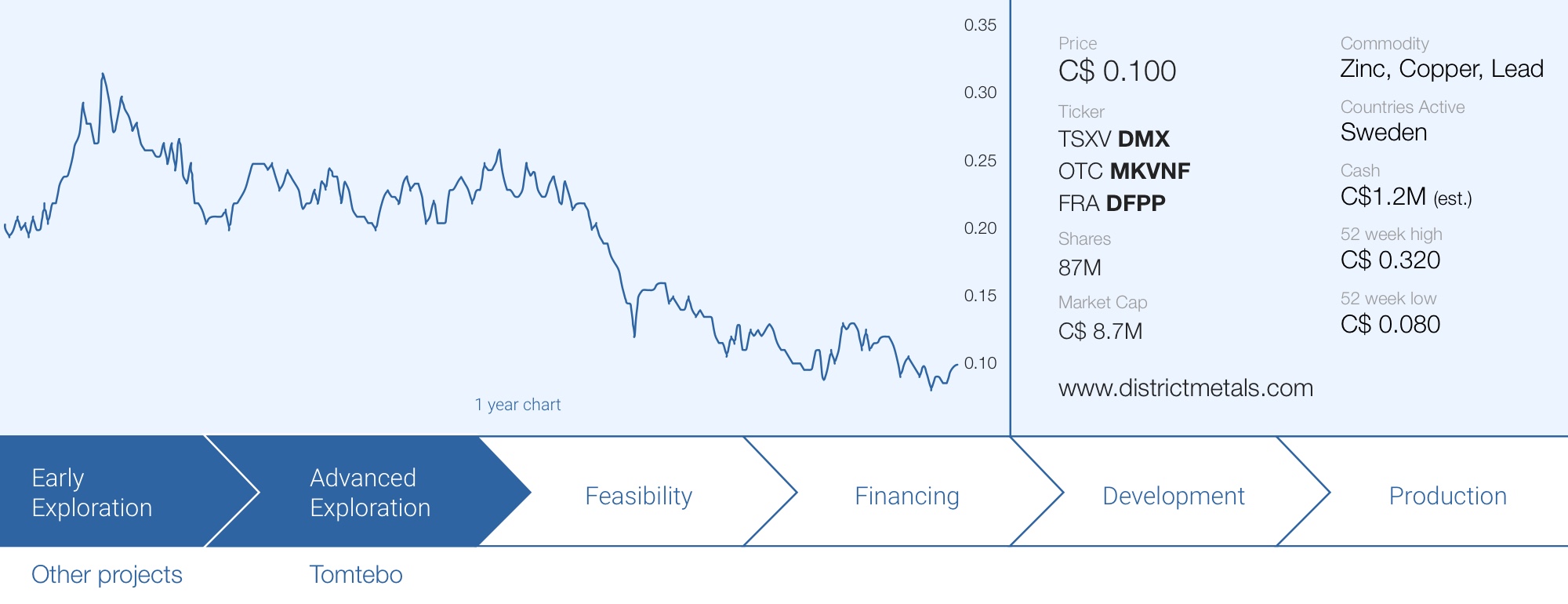
District Metals (DMX.V) released the assay results from two more holes drilled on the Tomtebo polymetallic project in Sweden in August. One of those holes was testing a magnetic anomaly and came up empty, the other hole extended the high-grade zinc-heavy mineralized zone at the Steffenburgs prospect at depth.
Although the zinc price is still trading close to $1.5 per pound, a level most zinc companies would have signed up for just two years ago, the market just doesn’t seem to care at all about base metals. And the lack of interest doesn’t just remain limited to exploration stories like District Metals. Even producers can’t just catch a bid which seems to point towards a general disinterest towards base metals.
And that’s surprising. Unlike precious metals, base metals are used in our daily lives. And while recession and/or economic crisis will indeed weigh on the demand for base metals, history has shown us a demand slowdown is per definition temporary: after every downcycle, there generally is an upcycle. And if no one invests in new (zinc) mines, then where will the supply come from a decade from now?
So the apathy when it comes to base metals is not just related to District Metals. But as District is a non-revenue company, it is at the mercy of the financial markets to raise the capital needed to continue its exploration efforts.
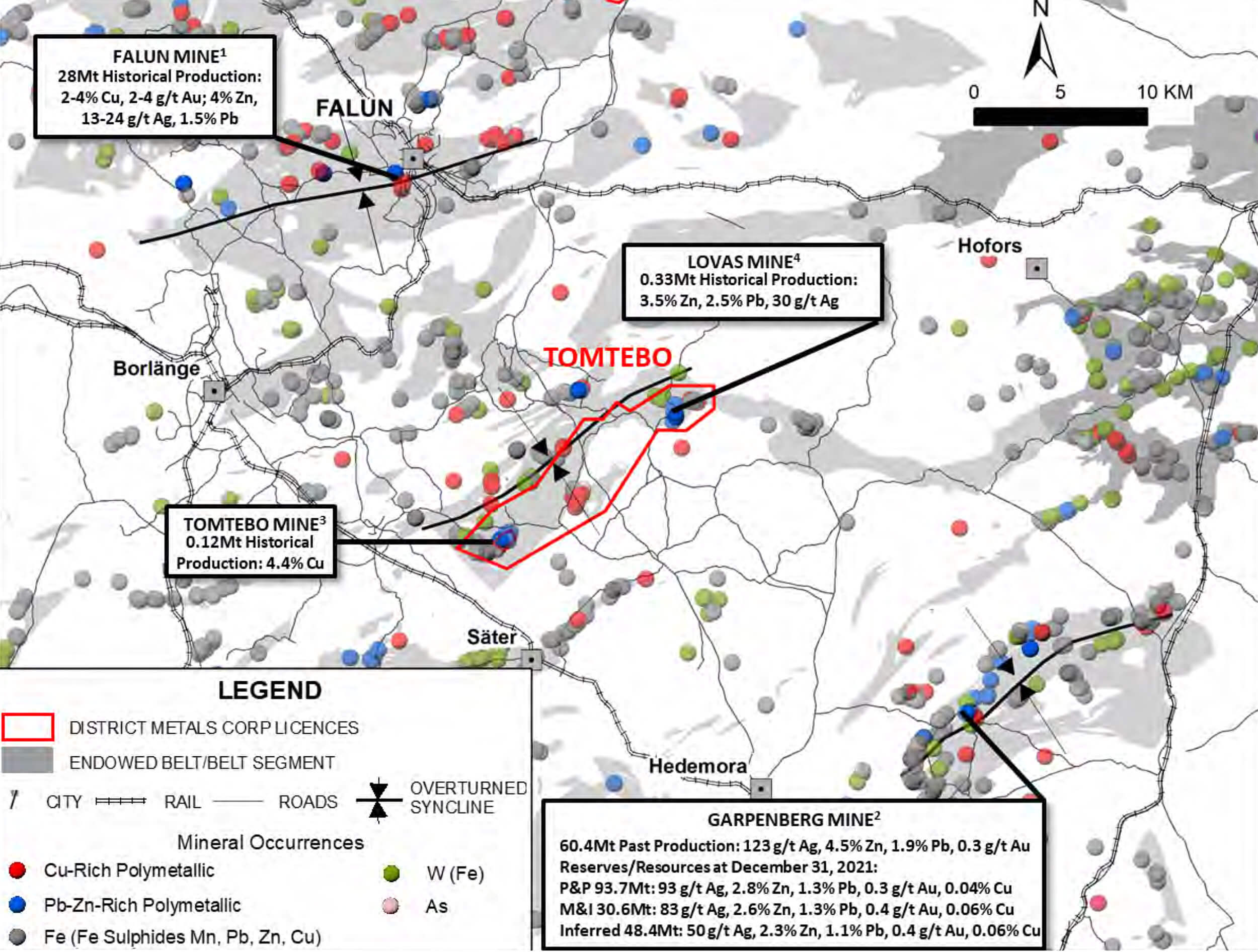
Two holes were released: one good hole and one bad hole
One hole was drilled almost 700 meters to the northeast from the historic Tomtebo mine at a virgin target to drill-test a magnetic high anomaly. Unfortunately, this hole came up empty and the company’s technical team is now analyzing the data to see if the results warrant additional follow-up holes.
The second hole was much better. Hole 38 was drilled at a known mineralized zone and about 40 meters down plunge from hole 25 which was drilled in 2021 and intersected 14.3 meters of 14.15% zinc-equivalent. Hole 38 was excellent as it encountered three distinct mineralized zones and it did what it was supposed to do: confirm a relatively wide and high-grade area of mineralization below the previous high-grade intervals.
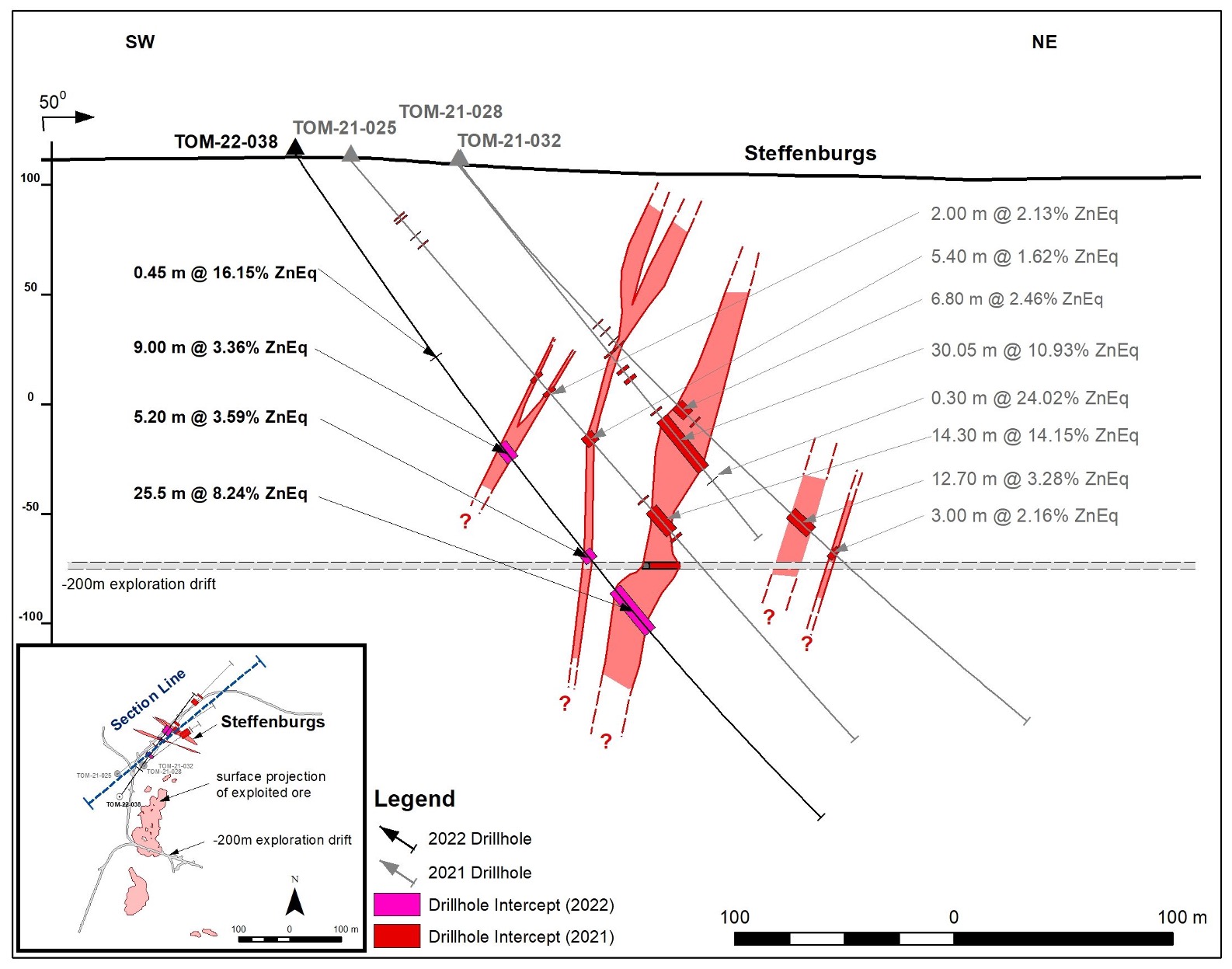
While the 25.5 meters at 8.24% Zinc-Equivalent is excellent, let’s keep in mind the drill bit intersected two other interesting areas of mineralization along the way. An interval of 9 meters containing 3.36% zinc-equivalent is interesting, and this was followed up by 5.2 meters containing 3.59% zinc-equivalent before hitting the broader 25.5 meter interval.
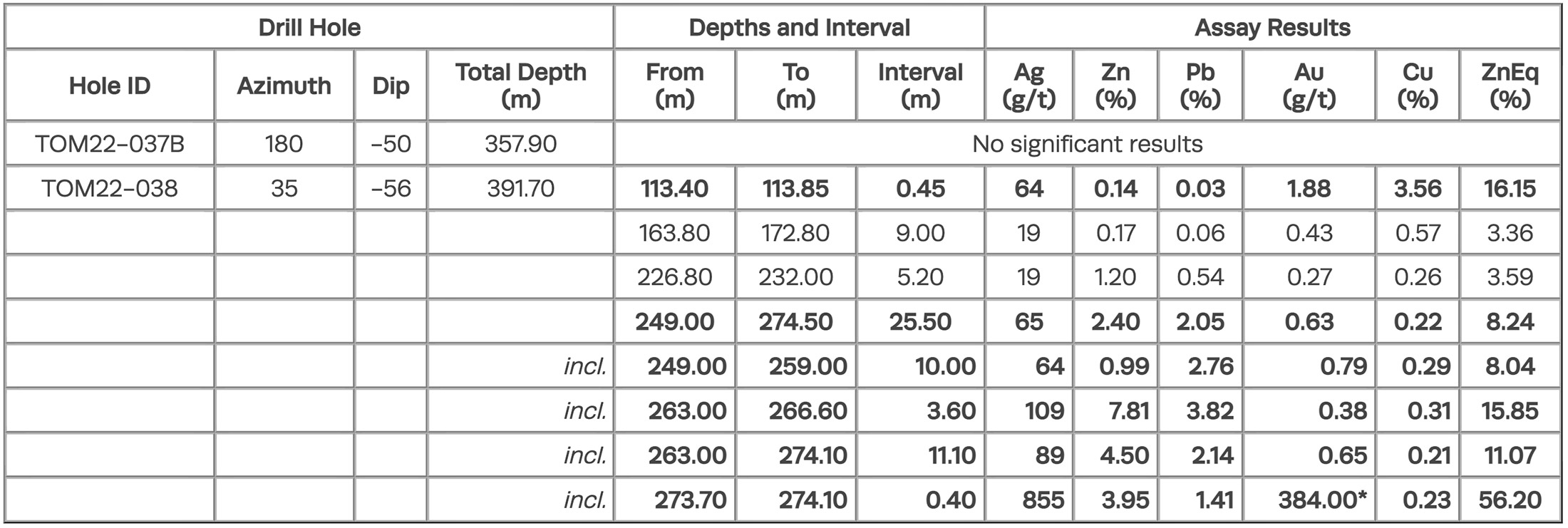
The general takeaway is that this appears to be a positive target. While hole 037B didn’t yield any results, it is far more important to see District was effectively able to confirm the high-grade mineralization at depth at the Steffenburgs zone. The extremely high-grade gold (and silver!) result over a very narrow 40 centimeter interval was pretty interesting to see, and rest assured, this narrow interval did not skew the average grade in the wider interval as the gold grade was capped at 10 g/t for the calculation of zinc-equivalent grades.
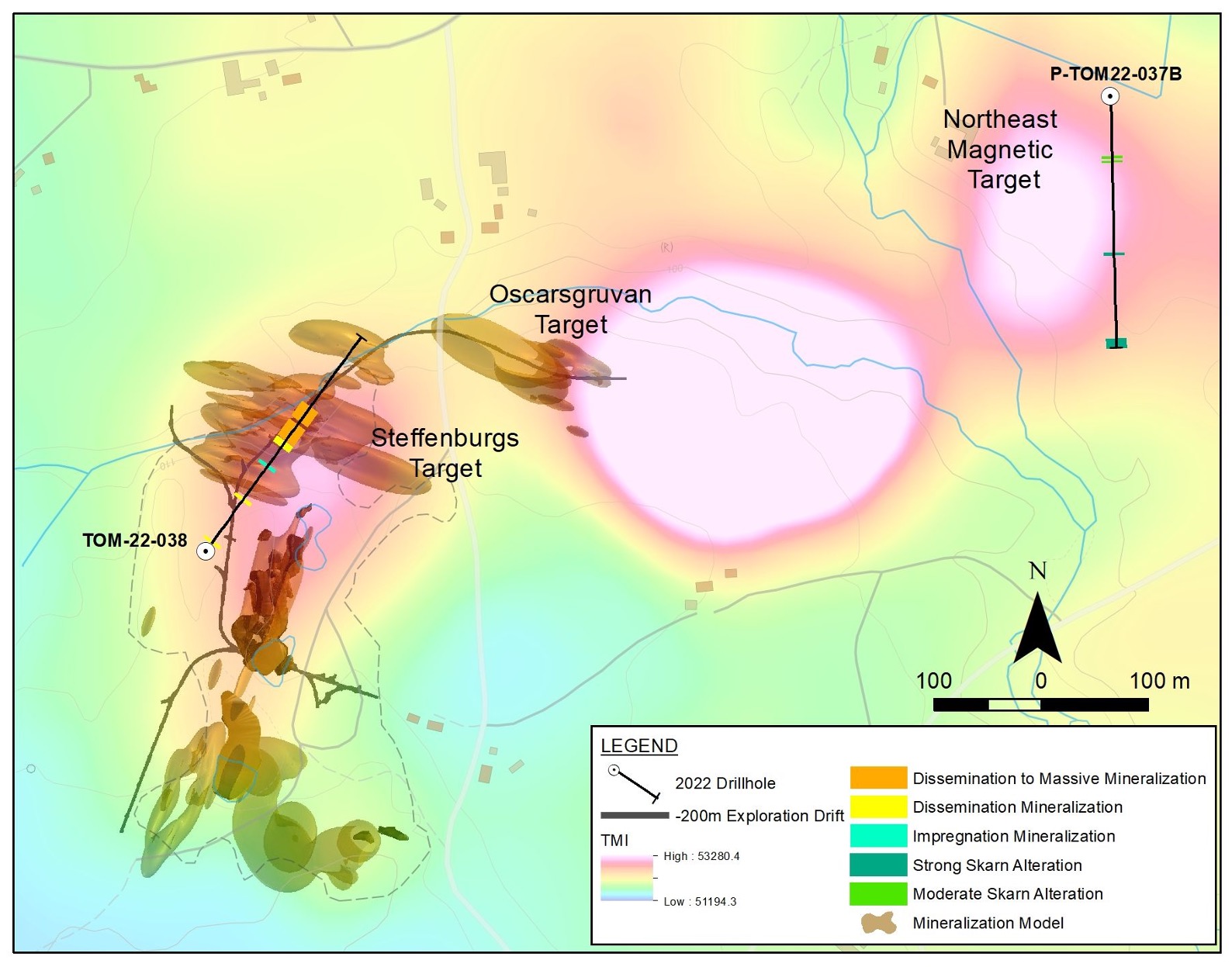
Sitting down with CEO Garrett Ainsworth
Tomtebo
Last month, you released the assay results from two holes drilled on the Tomtebo project. One of the holes, 22-037B did not intersect anything significant. Does this mean the Northeast Magnetic target has been ‘killed’ or is there another approach you’d like to try?
Hole TOM22-037B did intersect several bands of skarn alteration with associated magnetite that shows us we have encountered an important fluid corridor. We’ll use whole rock geochemistry to get a better feel for where the fluid trap might be situated, but the northeast magnetic target is not a huge priority at this time.
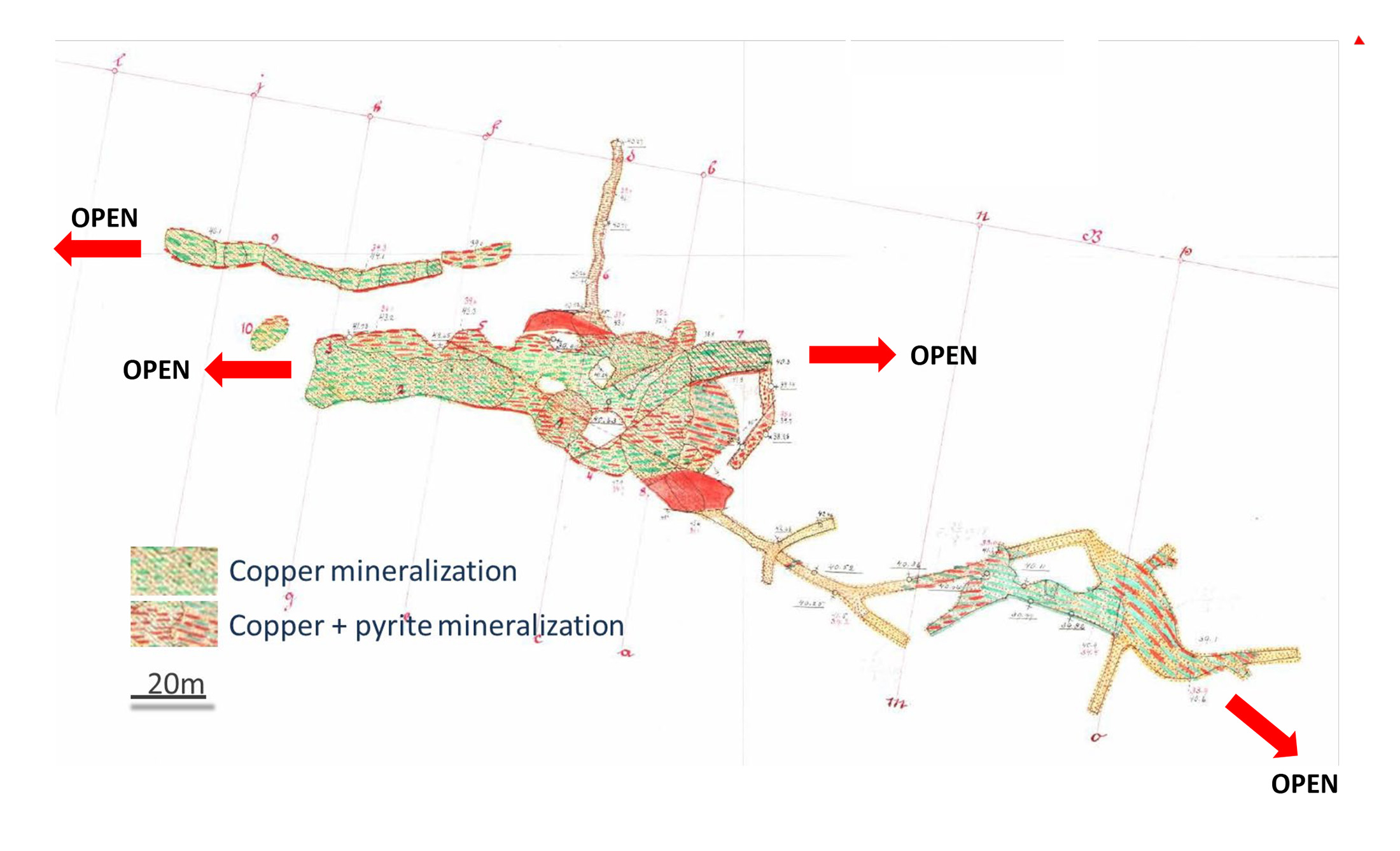
Is there any way you can finetune the exploration approach before committing to drill, or is drilling a hole the only way to find out what’s causing the anomaly?
There comes a point where you can only do so much geophysical and geochemical surveys at surface, and then you just have to drill test. At the Tomtebo Mine we have used all of the most important geophysical surveys (electromagnetic, magnetic, and gravity) to assist with identifying the mineralized system. We have also geologically mapped and geochemically sampled at survey wherever possible. There is no silver bullet for discovering a polymetallic deposit in the Bergslagen District, but the surveys we have completed at Tomtebo gives us the best shot to vector into more mineralization with the drill bit.
You were originally planning to drill three holes but ended up drilling only two. What caused the change of heart?
When we started drilling at Tomtebo in late-April the stock markets began to decline significantly along with District’s share price. At that time, we made a cautious decision to reduce the drilling budget and conserve cash thinking that the markets were likely entering a prolonged period of volatility with rising interest rates, recession risk, and a hawkish Fed. We also reduced the drilling budget on our Gruvberget Property. The result is that we have CAD$1.2M cash and a reduced burn rate of $30k/month to withstand the current market conditions.
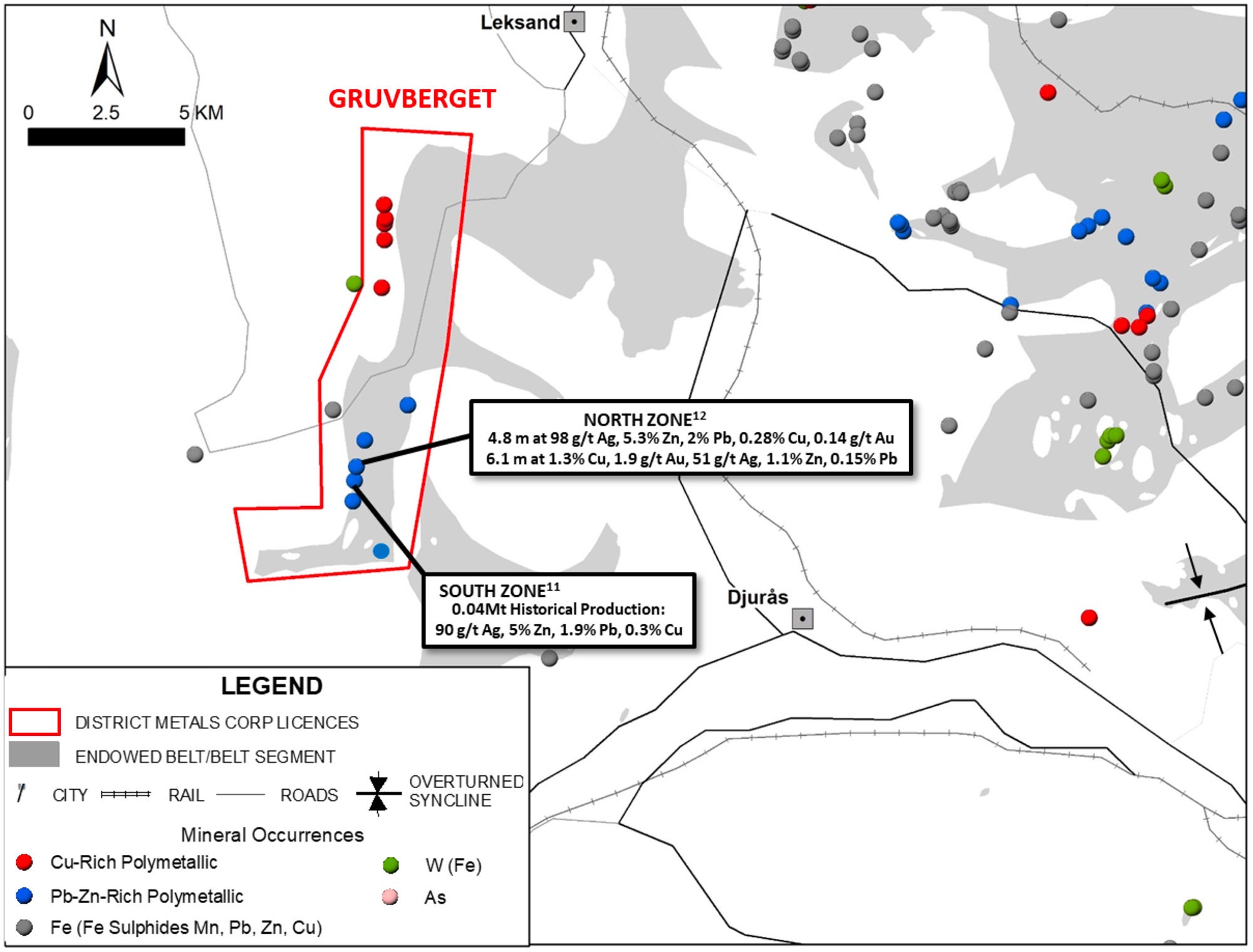
Let’s move on to the juicy stuff. At the Steffenburgs zone of the Tomtebo project, you once again intersected high-grade polymetallic mineralization. While the zinc-equivalent grade was 11.07% zinc, ‘only’ 4.5% of the ZnEq grade actually consisted of zinc with interesting silver grades as nice kicker. What kind of tonnage do you think you currently have at the Steffenburgs Zone?
Yes, the highlight intercept was 25.5 m at 8.2% ZnEq that included 11.1 m at 11.1% ZnEq. The silver grades at Steffenburg seem to range from 40 to 80 g/t, but we have noticed some meter scale intervals in the 100’s g/t, and of course some narrow decimeter scale at up to 855 g/t. The silver grades are very important for mines in the Bergslagen District, and it is one of the main reasons why Boliden makes so much money at their Garpenberg Mine where the silver grades are ~100 g/t.





The final section of hole 22-038 encountered 0.4 meters of 384 g/t gold. A very nice nugget which was obviously capped in the wider interval as the ZnEq grade for that 40 centimeter interval was a stunning 56.2% despite a zinc grade of just 3.95%. What do you make of that ultra high-grade gold interval?
Rodney (Allen, Technical Advisor), Hein (Raat, Country Manager) and I have had some great internal discussions about this very bonanza gold grade in hole TOM22-038. It’s not common in the Bergslagen to see this type of gold grade, but in other holes (TOM21-001, -025, and -028) we have seen up to 7 g/t gold along the edges of the massive sulphide lens at the Steffenburgs zone. I believe that we all agree the elevated gold grades are due to a younger mineralizing event that occurred after the deposition of the massive sulphides where the gold has been upgraded at the hanging wall and footwall contacts. This is an interesting additional target that we’ll be watching as we continue step out drilling.
Your hole 22-038 has confirmed the continuity of the Steffenburgs mineralization at depth and below the exploration drift 200 meters below surface. To reach this depth, you needed a 300 meter long hole. At what point does it become difficult to drill deeper from a ‘value for money’ perspective?
Yes, it was important for us to see that continuity of high grade polymetallic mineralization extending from hole TOM21-025 to hole TOM22-038. The drilling conditions at the Steffenburgs zone is fairly straightforward, and our recovery is always greater than 90%, so at this stage we can drill quite a bit deeper without any issues. The deviation is always something we’ll keep an eye on because the deeper the hole the greater the distance of deviation.
General
Anything else you’d like to talk about?
The stock markets have been heading down for most of this year, and most mineral resource companies are at very unvalued levels. At some point the momentum will turn positive as it always does for mineral resource companies, and the current share prices will look like excellent entry points.



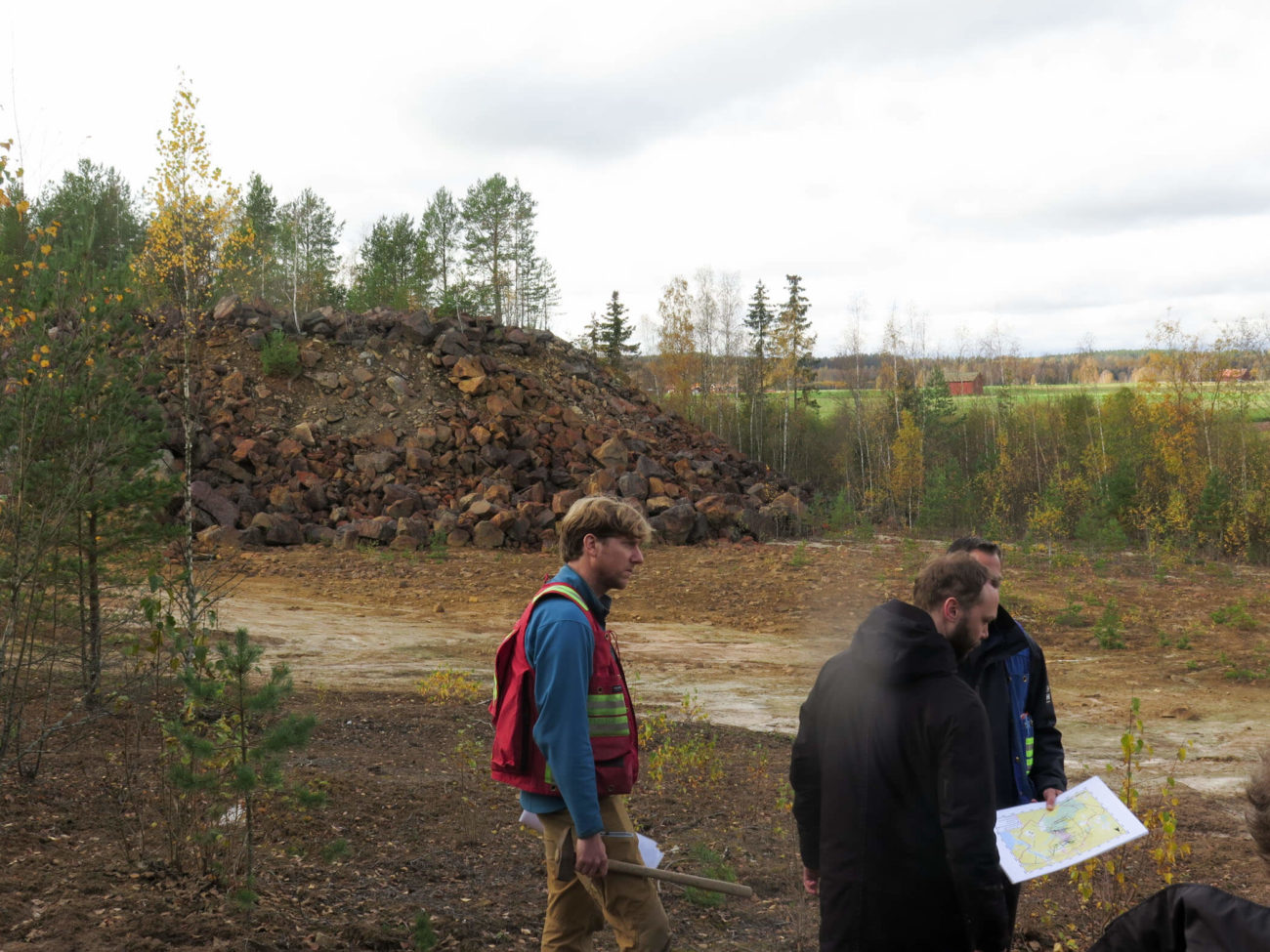

Conclusion
It’s of course still early days at Tomtebo and Steffenburgs but based on the drill data so far, it looks like the mineralization has now been confirmed to a vertical depth of just over 300 meters with an average width of 15-20 meters over a 85-100 meter strike length. This type of mineralization should have a slightly higher density than the standard 2.65 tonnes per cubic meter so perhaps we should use something slightly higher, in the order of 2.8-2.9 tonnes per cubic meter.
A quick back of the envelope calculation based on those parameters tells us the Steffenburgs zone currently sits at 1.6-1.7 million tonnes. Cute, but obviously not large enough for a standalone operation, even at 10 or 12% ZnEq.
And that’s fine. Keep in mind District Metals has only been able to drill a handful of holes at Tomtebo as the tough reality is that an exploration-stage company is at the mercy of the capital markets to raise the funds to complete said exploration. The company’s approach at Tomtebo is the right one, the decision to downscale the exploration program to conserve cash also is the right one.
The Tomtebo flagship project is a good one as well. So now we have to wait for the market to turn and get these base metal exploration companies the attention they deserve.
Disclosure: The author has a long position in District Metals. District Metals is a sponsor of the website. Please read our disclaimer.
